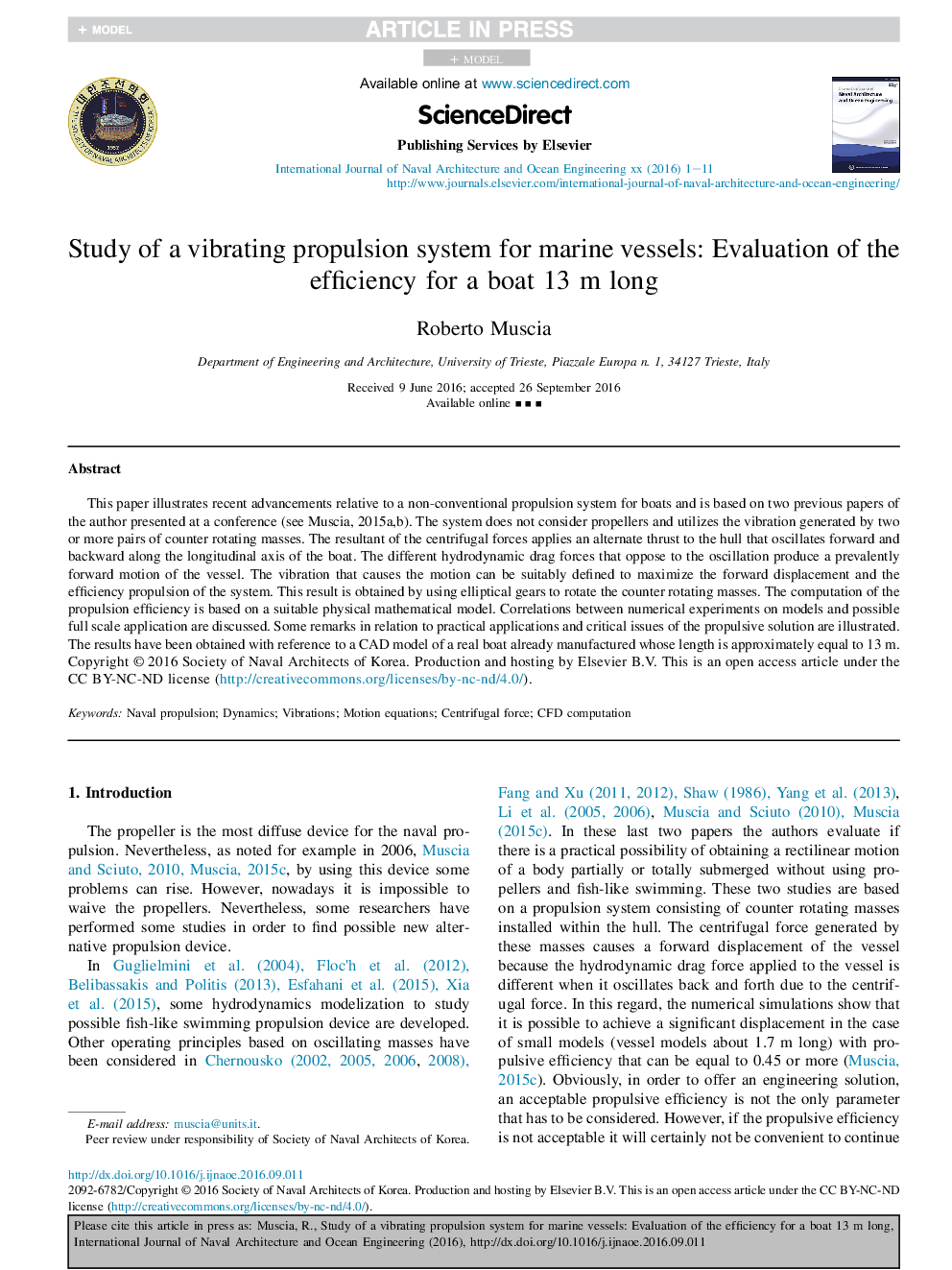| Article ID | Journal | Published Year | Pages | File Type |
|---|---|---|---|---|
| 8864964 | International Journal of Naval Architecture and Ocean Engineering | 2018 | 11 Pages |
Abstract
This paper illustrates recent advancements relative to a non-conventional propulsion system for boats and is based on two previous papers of the author presented at a conference (see Muscia, 2015a,b). The system does not consider propellers and utilizes the vibration generated by two or more pairs of counter rotating masses. The resultant of the centrifugal forces applies an alternate thrust to the hull that oscillates forward and backward along the longitudinal axis of the boat. The different hydrodynamic drag forces that oppose to the oscillation produce a prevalently forward motion of the vessel. The vibration that causes the motion can be suitably defined to maximize the forward displacement and the efficiency propulsion of the system. This result is obtained by using elliptical gears to rotate the counter rotating masses. The computation of the propulsion efficiency is based on a suitable physical mathematical model. Correlations between numerical experiments on models and possible full scale application are discussed. Some remarks in relation to practical applications and critical issues of the propulsive solution are illustrated. The results have been obtained with reference to a CAD model of a real boat already manufactured whose length is approximately equal to 13Â m.
Related Topics
Physical Sciences and Engineering
Earth and Planetary Sciences
Oceanography
Authors
Roberto Muscia,
